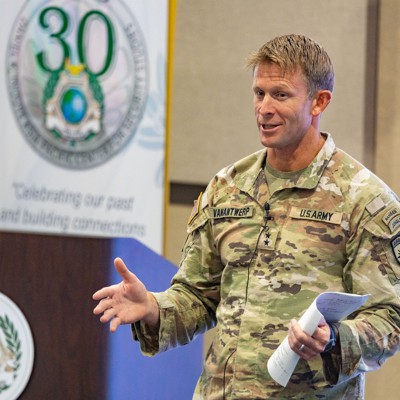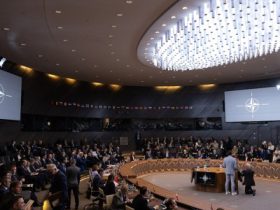HONOLULU—No single technology can win every battle and fix every problem, the leader of Special Operations Command Pacific said this week. Instead, the “ability to integrate multiple systems, disparate systems, with more open architecture—that is eventually going to win. If you have that sort of single, standalone technology…it’s likely to be cracked, hacked, and eventually overcome.”
Remember the Karate Kid movies, Maj. Gen. Jeffrey VanAntwerp urged his audience at the AFCEA TechNet Indo-Pacific conference here. When Daniel learned a crane kick, Mr. Miyagi told him, “If done right, no can defense,” VanAntwerp said. “And that worked in Karate Kid one, but then in Karate Kid two, he goes to Okinawa, to people who are more familiar with the operational environment, and…the crane kick did not work.…He eventually had to go to the spinning drum.”
For SOCPAC, VanAntwerp said the combination of robotics, autonomy, and resilient networks is “absolutely critical,” because information is useless unless it comes with an ability to make a coherent picture. And whatever combination of systems that might emerge, having “the ability to disrupt our adversaries’ ability to target us, that is the oxygen that we require in this theater.”
VanAntwerp recounted a Ukrainian SOF commander’s remarks at a recent forum, noting that Ukraine has been able to deny Russia access to large portions of the Black Sea without a navy, deny air superiority with no air force, and hold the line with a significantly smaller army.
“They’ve been able to do that through a combination of the ability to see and sense and understand… with some help from partners,” and a network of various unmanned systems, he said. “It’s pretty amazing, and provides a really great example for us.”
So why is it taking the United States so much longer to adapt? VanAntwerp believes the key reason is “the lack of a tactical imperative”—namely, no American troops are dying on battlefields.
“I do believe this machine, which includes all of you and us, can move incredibly fast when there is that imperative,” he told the audience of industry representatives and troops. “But without it, we tend to, knowingly or unknowingly, we tend to pace ourselves.”
And as officials consider solutions, VanAntwerp said they must also be careful to consider the “cost curve,” he said.
With unmanned systems and the networks that enable them, the goal is to either have expendable low cost systems, or expensive highly survivable systems. “If we get caught in the middle, which is where we often find ourselves… that’s just bankruptcy. We can’t afford it.”
Read the full article here








Leave a Reply